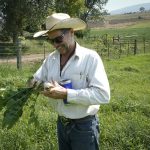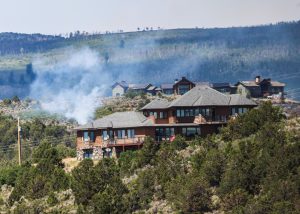Missouri Heights’ Milagro Ranch fields are green and healthy despite the odds
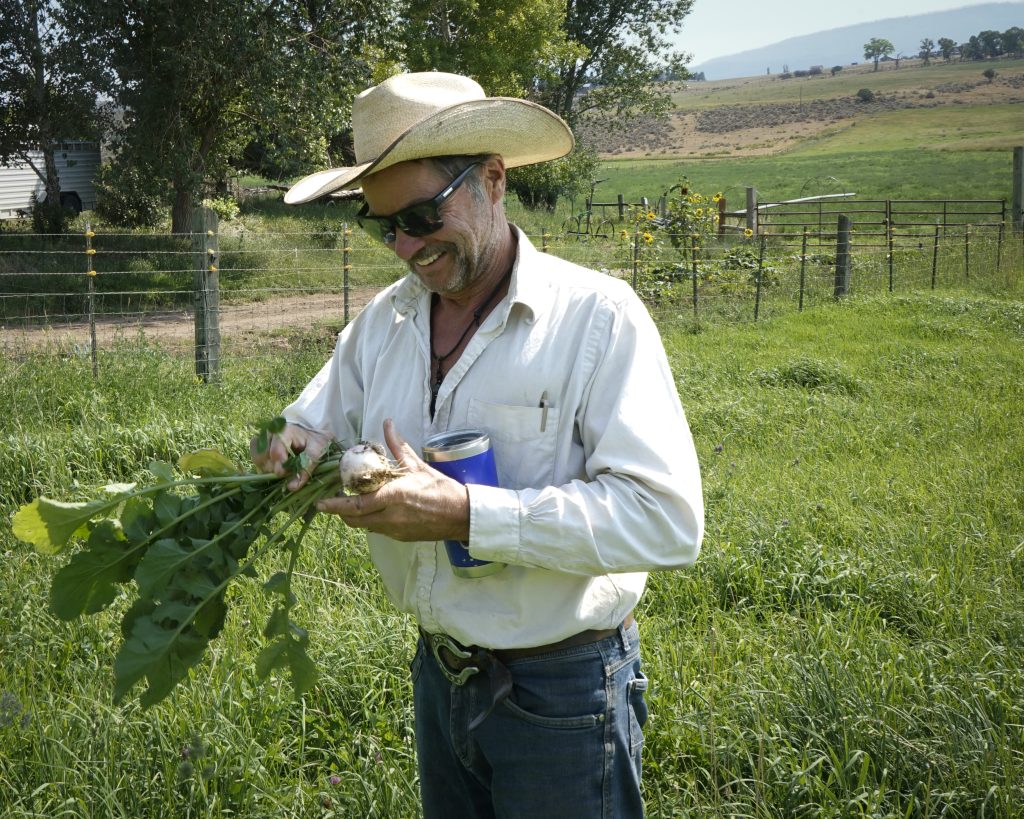
Beau Toepfer/The Aspen Times
Felix Tornare reached down into almost knee-deep grass, grasping the stem of a large, green leaf plant and pulling out a baseball sized radish.
Without any hesitation, he wiped off some of the dirt and took a loud, crunchy bite.
“Last year, the bull loved these, he’d pull them out and eat them like apples,” Tornare said.
Tornare and his wife Sarah own the 87-acre Milagro Ranch in Missouri Heights where they use regenerative farming. Fields are planted with a variety of native, long rooted grasses and plants that help stabilize the soil and store moisture even into late season drought. The cattle help to trample the grasses and re-seed the field, which shades the ground allowing the next layer of grasses to grow.
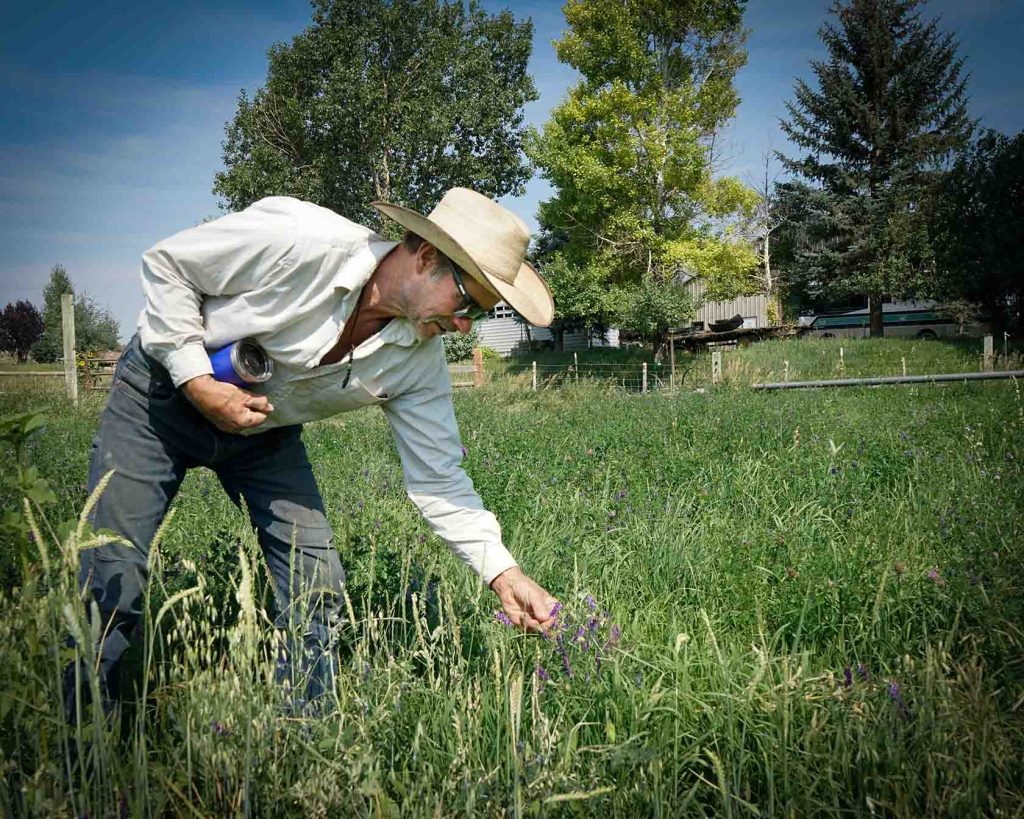
Because the trampled grass helps shade the soil and keep it moist, the fields can rebound even after droughts. Other farmers who cut their monocrop fields might end up “burning” the small amount of crop that is able to regrow after the cut as it is exposed to the sun.
“(Traditional farming is) cutting more than it can give, so next year it’s going to be worse because it’s in such bad shape now,” Tornare said. “How’s it going to recover?”
Before switching to regenerative agriculture, Tornare was cutting hay as far away as Rifle to sustain his 200-head herd of cattle. He was forced to shrink his herd size to what he has now, which is around 60 animals. Because of the switch, he now uses less fuel to harvest hay, leases significantly less land, has more time off, and has an excess of feed in his fields — which he says sustains his fellow rancher’s 100 cattle for around two months during the dry season.
For the ranches in Missouri Heights, especially those without senior water rights, this summer has been particularly harsh. Basalt Mountain serves as the ranches’ primary watershed. Ranchers get ditch water from Cattle Creek until the creek gets too low, as well as some stored in Spring Park Reservoir.
According to Tornare, because the snowpack this winter was so bad, they had less time to receive water from the ditch and about half as much water to use from the reservoir. Tornare hasn’t had water in his irrigation pipes for three weeks, and that was after he rationed what he was allotted.
He won’t have any more irrigation water until next summer.
“Three weeks that hasn’t seen any water, and yet, if we walk down (to the field), it’s going to be wet, it’s like we had water yesterday,” Tornare said.
The only farms that have a lot of water are the ranches with the most senior water rights that can still pull water from the ditch, and ranches in the valley floor that border the Roaring Fork River. Despite this, Tornare’s fields are greener than the surrounding hillsides and that of his neighbor, who recently cut the little bit of hay their field grew. Tornare opted not to cut his field because that allows the sun to hit the ground directly, drying it out and making it more labor, water, and fertilizer intensive to regrow next year.
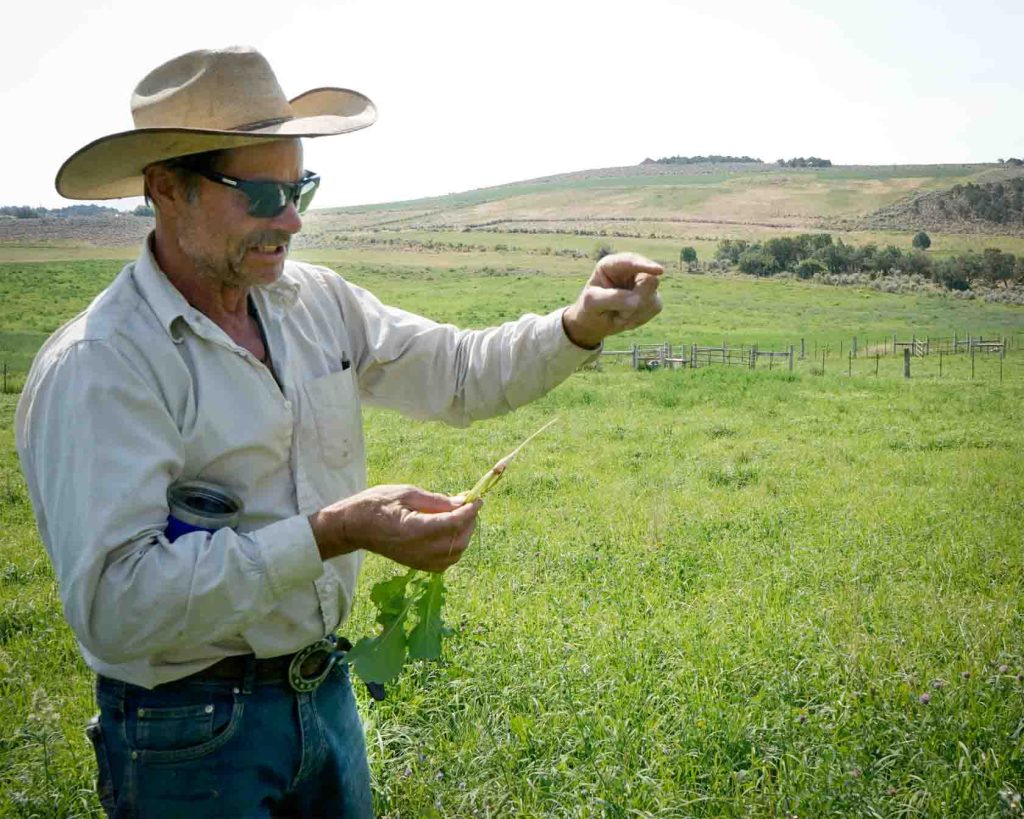
According to Tornare, this traditional model of agriculture where farmers heavily fertilize their soil will eventually deplete the soil to the point that nothing will be able to grow.
“It’s just not going to work,” Tornare said. “The land is going to be depleted at some point. It doesn’t matter how much fertilizer you put on, eventually it’s going to be dead.”
The Tornares use a selection of 12 seeds; vetch, faba beans, crimson clover, spring peas, frosty berseem clover, sweet clover, barley, oats, turnips, ryegrass, flax, and buckwheat. The roots of those plants penetrate deep into the soil, trapping more moisture and helping to stabilize the soil against erosion. Tornare likens this process to a sponge absorbing water.
Because of the drought and lack of rain this summer, Tornare hopes that his green fields will make other ranchers think more about other practices they could adopt that could increase their fields sustainability and yield.
“For anybody not to go, ‘Hey, what is different?’ and question themselves, it’s kind of crazy, because if you see my front field, (the grasses are) deep also,” Tornare said.
Another benefit of the lush, native grasses is the biodiversity it promotes. Tornare likens the process to an “invasion of birds” — the presence of native species and wildlife shows that his soil is healthy and less polluted compared to traditional farms in places like Nebraska.
“The balance is better,” Tornare said. “If something is here … there’s a reason.”
For Tornare, it’s all about community, especially going into the aftermath of the recent Coulter Creek Fire. Tornare notes how close the ranching community is in the Roaring Fork Valley. On Sunday, he left his ranch as the Coulter Creek Fire approached to help his neighbor evacuate their livestock and pets. According to Tornare, the green, open fields that surround his property would help protect people and livestock as well as his house.
“It’s just amazing how it takes a disaster to get people together,” Tornare said. “We went up to the next ranch, they were getting evacuated, got their horses and their dogs and cats, (and) brought them here. It’s just what we have to do, and I think that it’s getting lost these days, community and working together, and it’s not about money, it’s about helping each other change.”
Tornare has also been helping other ranchers secure conservation easements for their properties in Missouri Heights ever since he was able to secure an easement for Milagro Ranch in 2023. These easements will ensure the land continues to be used for food production.

Local golf results: Aspen men’s and women’s golf associations, Ivan Tache City Match Play Championships
Local golf results: Aspen men’s and women’s golf associations, Ivan Tache City Match Play Championships
Wildfire in Missouri Heights prompts evacuations, burns 115 acres as of Sunday night
A wildfire broke out Sunday near Missouri Heights that prompted temporary evacuations and burned an estimated 115 acres, although no injuries or major structural damage were reported.




